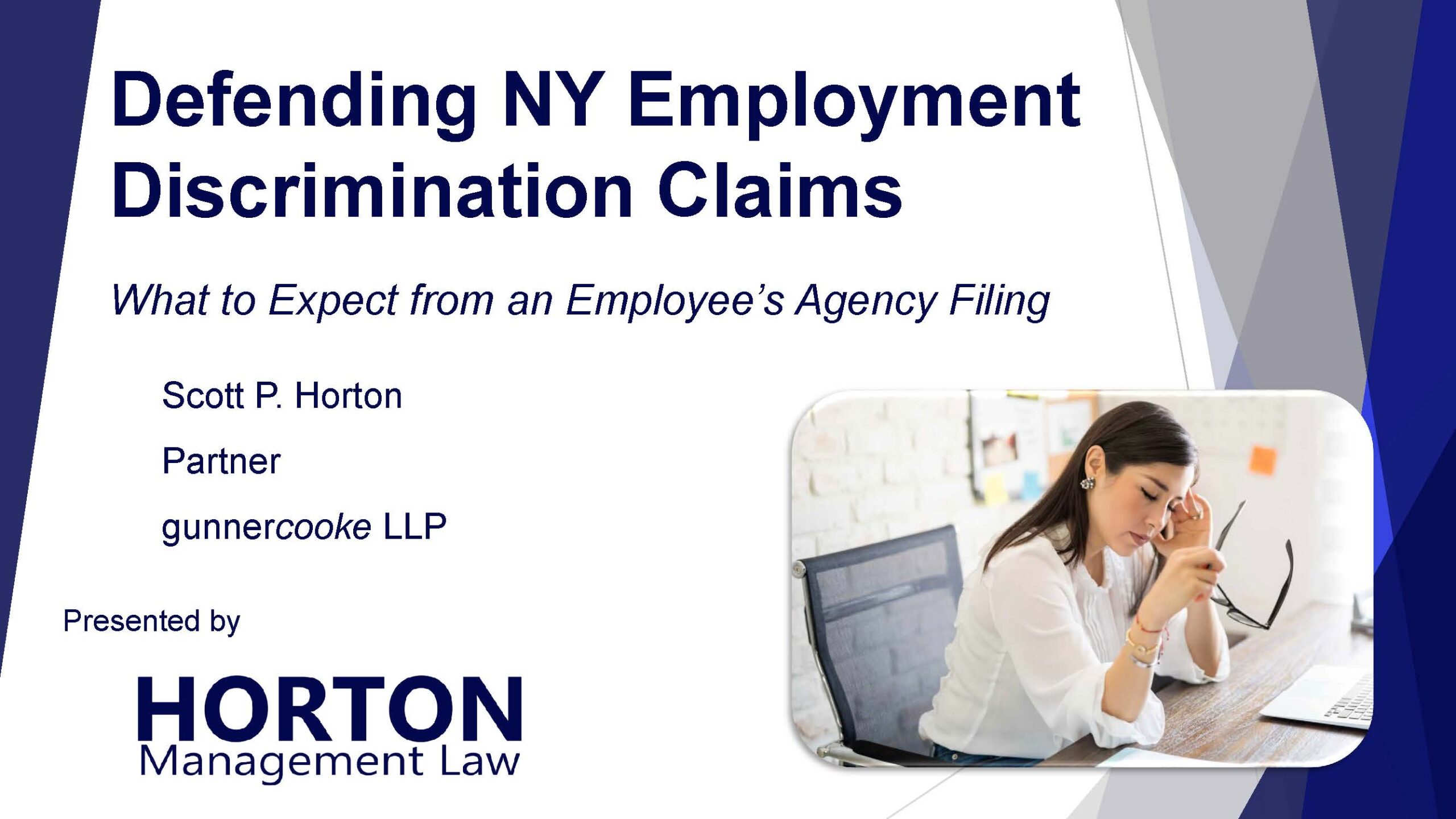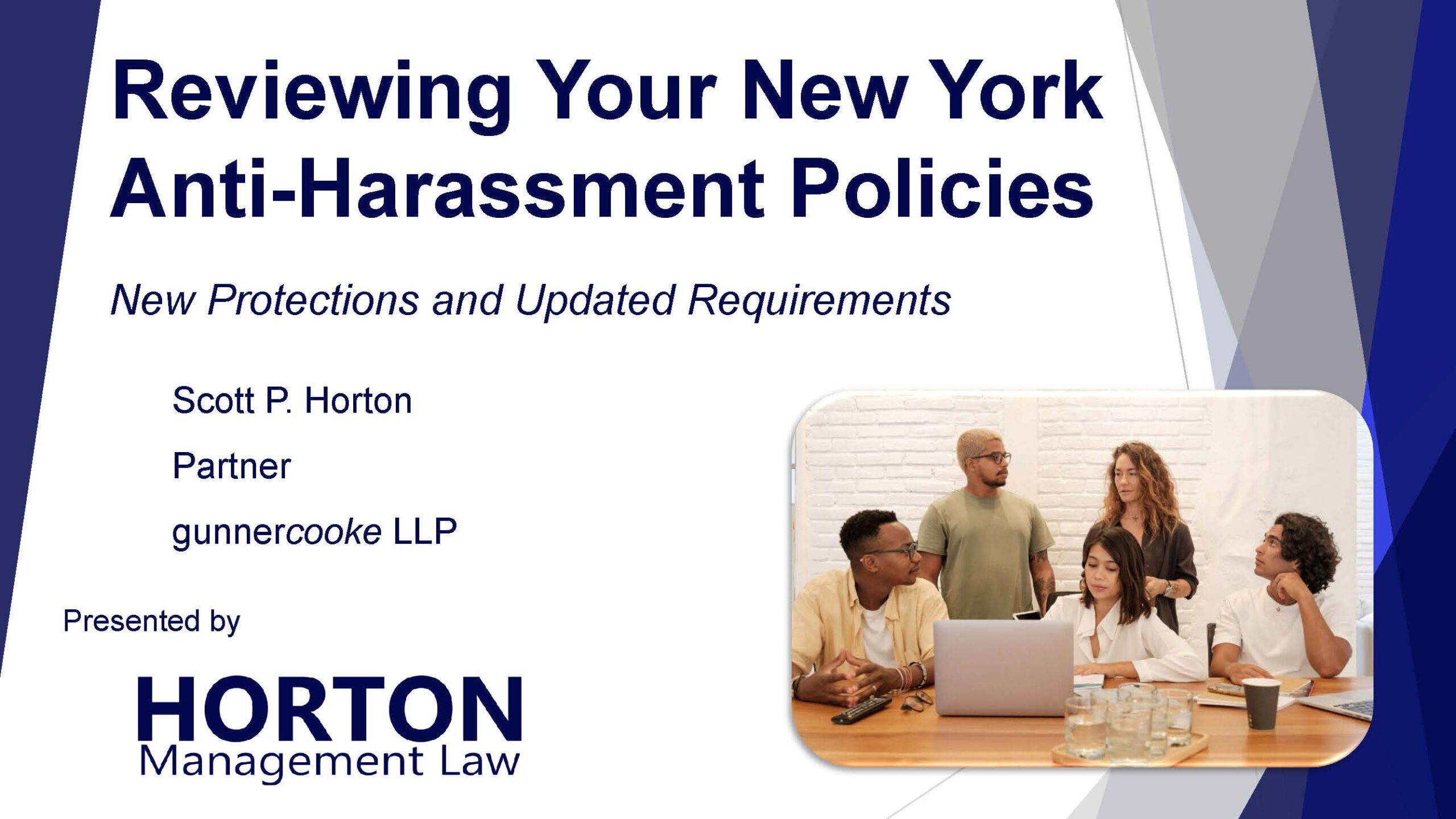On January 25, 2024, I presented a complimentary webinar entitled “Defending New York Employment Discrimination Claims”. For those who couldn’t attend the live webinar, I’m happy to make it available for you to watch at your convenience.
In the webinar, I discuss:
- The Role of the EEOC & New York Human Rights Agencies
- Filing Statistics
- Effective Response to Allegations
- Settlement Strategies
- Litigation Preparedness
and much more!
With both federal and state agencies having jurisdiction over employment discrimination claims across New York, employees have several procedural alternatives for pursuing such claims. It is important that human resources professionals and other members of management understand the different venues when they receive a complaint.
This webinar provides an overview of the EEOC, New York State Division of Human Rights, and New York City Commission on Human Rights. Learn more about how cases progress in each of these agencies. This information, with other strategies discussed, will better position you to respond to discrimination complaints and, hopefully, resolve them favorably.
Why You Should Watch “Defending New York Employment Discrimination Complaints”
Understanding the nuances of each employment discrimination agency is crucial for the effective handling of such claims.
We delve into critical aspects such as filing statistics, providing a data-driven perspective on the frequency and nature of discrimination claims. This information will help your organization understand its own risk profile and prepare for potential claims. The webinar addresses effective response strategies to allegations. Knowing how to respond timely and appropriately to discrimination complaints is key to mitigating risks arising from the administrative process and potential court litigation. Plus, consider factors that will affect the potential settlement of claims before more costs (financial and others) are incurred.
Don’t Miss Our Future Webinars!
Click here to sign up for the Horton Management Law email newsletter to be among the first to know when registration is open for upcoming programs! Plus, follow us on LinkedIn for updates on important employment law issues.


